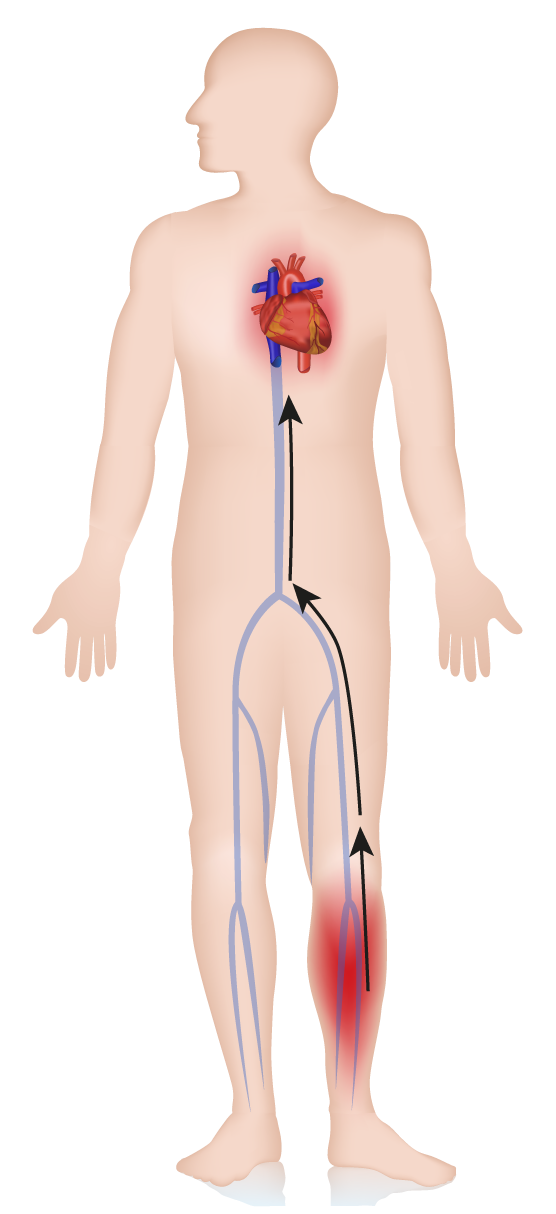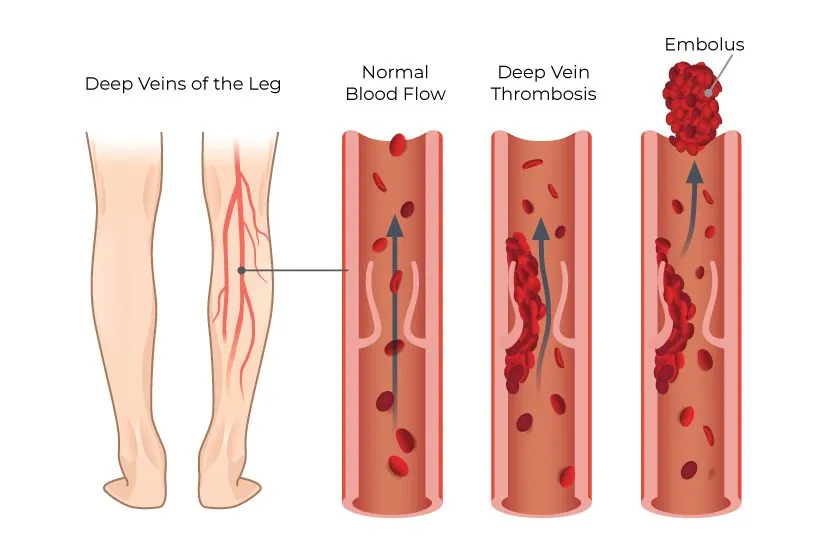Welcome to ClotIQ
Your Physician has directed you to ClotIQ to complete a Deep Vein Thrombosis (DVT) Risk Survey. If your Risk Score category is determined to be HIGH, it is recommended you order a Portable Compression Device for in home-use following your surgical procedure. Your physician recommends this product in an effort to prevent post-operative Blood Clot(s).
3 Simple Steps to Safety
Complete DVT Risk Survey
Instantly see your Personal DVT Risk Score
If you are “HIGH RISK”, order your Device
Benefits of a Portable Compression Device
The 5 Pillars of Mechanical Compression present reasons why surgical patients should use Portable Compression Device immediately following surgery to reduce their risk of blood clot(s) or DVT. Using a portable compression device can provide several extremely important benefits including improved circulation, reduced recovery times, and increased mobility.
Reduced Risk of DVT
The use of a Portable Compression Device can significantly reduce the risk of developing Deep Vein Thrombosis (DVT), a potentially life-threatening condition that can occur after surgery.
Improved Circulation
The compression provided by this device can help improve blood flow in the legs, reducing the risk of blood clots while promoting healing.
Reduced Swelling
The compression the device provides also helps to reduce swelling in the legs which reduces discomfort while promoting mobility.
Convenience
The device is tubeless, cordless, and portable, making it easy for patients to continue their treatment at home to prevent DVTs.
Improved Recovery
By reducing the risk of a DVT and promoting healing, the use of a Portable Compression Device can help patients recover more quickly and return to their normal activities sooner.

What is DVT?
Deep Vein Thrombosis (DVT) occurs when a blood clot forms in one of the large veins, usually in the legs, leading to either partially or completely blocked circulation.
If left untreated, this clot has the potential to move into the lungs and produce a Pulmonary Embolism (PE) requiring immediate medical attention.
Who is at Risk?
It does not discriminate by age, race, or gender. Anyone can be affected under the right circumstances, even if they are otherwise healthy and active. DVT risk is greatest between 3 and 14 days after surgery – usually after the patient has been discharged.
DVT threatens nearly three million Americans each year. Although preventable, almost 300,000 people die annually from DVT and its primary complication, Pulmonary Embolism.[2]
People Affected Each Year
Venous Thromboembolism (VTE) affects as many as 3,000,000 Americans each year.[2]
People Die Each Year
As many as 300,000 people die of blood clots each year.[2]
1 in 4
Sudden Deaths
1 in 4 people who have a pulmonary embolism (PE) die without warning.[1]
5x the Risk
During Pregnancy
Women are five times more likely to experience a dangerous blood clot while pregnant.[1]
2x the Risk
C-Section Deliveries
Surgical delivery by C-Section nearly doubles a pregnant woman’s risk for dangerous blood clots.[1]
1 in 10
Hospital Deaths
Roughly 1 out of 10 hospital deaths are related to blood clots in the lungs.[1]

How does a Portable Compression Device work?
Portable Compression Devices promote maximum comfort, compliance, and positive results. They are prescribed for use in the prevention of DVT for all limited mobility and surgical patients during hospital stay and especially for home-use during periods of recovery following surgery. Every 60 seconds, the devices inflate the leg cuffs to create venous blood-flow and preventing pooling of blood.
Then the cuffs will deflate. A fully integrated and rechargeable motor battery supplies up to 20 hours of uninterrupted DVT prevention on a single charge. Portable and lightweight, these devices always include “one size fits all sleeves”, promoting maximum comfort, compliance, and positive results.
Key Features
- One button operation
- Compact & fully mobile
- Sealed rechargeable motor
- 2 Soft-touch calf sleeves
- Not made with latex
- Adjustable fit
- Tubeless, Cordless design
- Quick Start Guide


